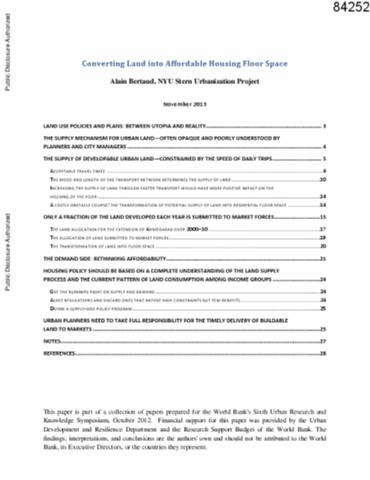Converting Land into Affordable Housing Floor Space
Cities emerge from the spatial concentration of people and economic activities. But spatial concentration is not enough; the economic viability of cities depends on people, ideas, and goods to move rapidly across the urban area. This constant movement within dense cities creates wealth but also various degrees of unpleasantness and misery that economists call negative externalities, such as congestion, pollution, and environmental degradation.




